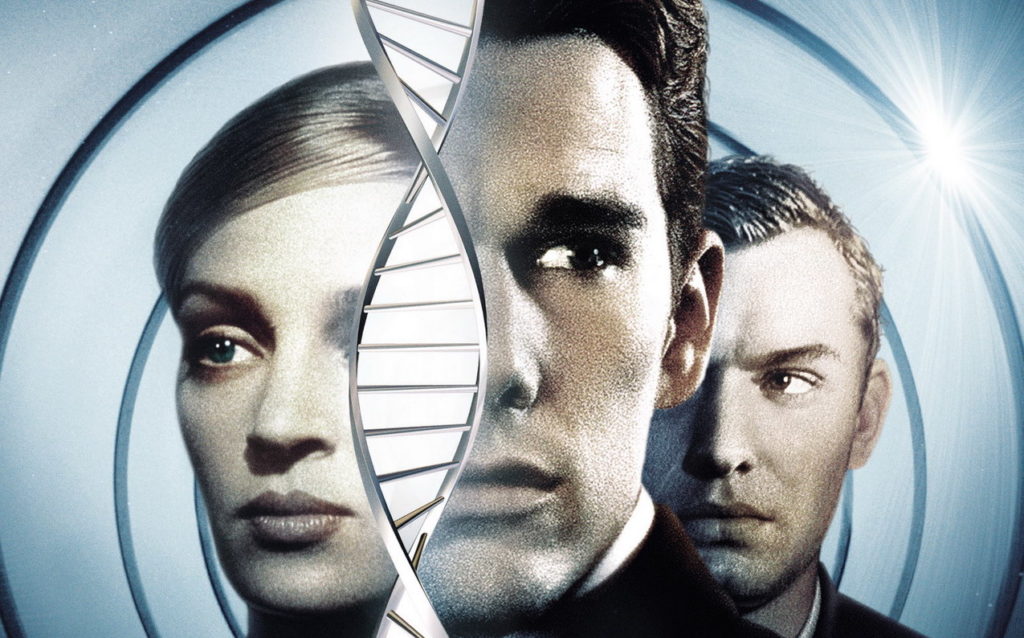Our brains communicate with electrical and hot sex videoschemical signaling, but scientists have discovered that light stimulation could hold potential keys to manipulating neuronal communication pathways that influence motor control, sensory perception, memory, neurochemical production and mood – or cellular virtual reality, as a report from the Journal of Cell Biology describes it.

With the roll out of the White House's $300 million BRAIN Initiative in 2013, interest in uncovering the secrets of the human brain has accelerated and now includes many government agencies, public/private partnerships and universities.
Dating back to at least 1971, optogenetic research has matured enough to gain the attention of organizations such as the NIH, DARPA and IARPA, who are exploring the role that light-sensitive cells could soon play in fields surrounding neurobiological, including physical and mental health, human-machine interfacing, and advancing artificial intelligence through reverse brain engineering.
Current optogenetic experiments rely on extracting "opsins" (light-sensitive proteins) from plants which can be introduced to mammals by methods including injection and infection via adenovirus.
Once delivered into an organism, opsins can be expressed in eye, brain or skin cells, allowing their light-sensitivity to be remotely activated or silenced with timed pulses of light in different color wavelengths across the light spectrum that can target multiple bodily systems and cause a variety of biological effects.

Researchers have suggested however that introducing opsins into an organism may not be a long-term requirement as methods are sought for using optogenetics on mammalian cells that respond naturally to light, such as those in the human retina.
As part of the BRAIN Initiative, scientists have been working on neuronal barcoding and completing a detailed online brain atlas for researchers. This is hoped to eventually provide a detailed circuit diagram of every neuron and synapse in the brain, which would allow various neuronal patterns to be identified so they can be triggered for the desired effect.
If targeted precisely enough with the appropriate light, it's thought that optogenetics could be used by manipulating neural circuits involved with pain, fear, reward, wakefulness and social behaviors. In one Yale study, for example, mice were infected with a virus which made their neurons sensitive to blue light. Scientists then used that light pathway to activate predatory behavior.
"...The researchers used a tiny optic fibre to shine a blue laser on the amygdala. This prompted the animals to tense their jaw and neck muscles... 'It's not just physiological, it's hunting, biting, releasing and eating. Those are motor sequences that require a lot of information...' [said an MIT neuroscientist]"
In 2015, optogenetics was combined with CRISPR to develop a set of photoactivatable tools that enable the editing of an organism's genome through the external use of light. Said tools can control the location, timing and reversibility of the genome editing process, whether that be activating, repressing or modifying a gene.
Optogenetics is also mentioned as an integral feature of the DARPA-funded Neural Engineering System Design (NESD) program, a joint effort between six teams who are aiming to create an implantable neural interface over the next four years that is capable of high resolution brain-to-machine communication. Such advancements, for instance, could facilitate the development of mind-controlled prosthetics featuring touch sensation like the DARPA-backed 'Luke' arm (previously known as the 'Deka' arm).
In the past, DARPA has looked to optogenetic memory manipulation techniques for treating veterans with traumatic brain injury and/or PTSD through memory restoration or deletion.
More recently, during a November 2017 mental health conference with 30,000 attendees in Washington D.C., optogenetics was noted for the impact it's having on the ability to study the brain. According NPR science correspondent Jon Hamilton, the technology has allowed aspects of human mental health disorders to be reproduced in animals, aiding the mapping of neuronal circuits involved with issues such as depression.
Companies interested in the application of optogenetic technologies have begun emerging over the last decade, particularly since the FDA approved the technology in 2015 for use in treating an eye disorder known as "retinitis pigmentosa."
The approval prompted a clinical trial and optogenetic developments have since been used to restore partial vision in patients who were described as being "profoundly blind." Chronic pain management, epilepsy and Parkinson's are among many health issues that researchers are experimenting with addressing through optogenetics.
The technology is also contributing to other areas of research such as "sonogenetics," which uses low-pressure ultrasound to activate ultrasonically sensitized neurons. This is another area of interest for DARPA, which has funded Columbia University's endeavor to stimulate neurons using ultrasound and believes it could eventually lead to a magnetic version of the technology called "magnetogenetics."

To investigate the therapeutic use of optogenetics, acoustics and electromagnetic fields, DARPA launched the ElectRX (Electrical Prescription) program in 2015, which is capable of stimulating, modulating and monitoring the body's peripheral nervous system. The research agency is also exploring how artificial intelligence could be used in closed-loop brain implants, such as the ability to detect patterns associated with mood disorders.
With enough progress, it's believed that optogenetics and its surrounding bodies of research may open the door to real-time brain mapping and biofeedback technologies, which could be used to treat all manner of ailments on the fly through closed-loop neuromodulation signals coming to and from an implanted device, ultimately eliminating the need for pharmaceuticals.
 Paramount+ Black Friday deal: $2 per month
Paramount+ Black Friday deal: $2 per month
 Redux: The Wind Flakes Gold
Redux: The Wind Flakes Gold
 There is No Story That is Not True: An Interview with Toyin Ojih Odutola by Osman Can Yerebakan
There is No Story That is Not True: An Interview with Toyin Ojih Odutola by Osman Can Yerebakan
 Lego free Valentine's Day Heart: How to get free Lego
Lego free Valentine's Day Heart: How to get free Lego
 The Last of French Seventies Counterculture by Stephanie LaCava
The Last of French Seventies Counterculture by Stephanie LaCava
 Can ChatGPT be your personal trainer?
Can ChatGPT be your personal trainer?
 The most badass Latin phrases
The most badass Latin phrases
 Greenpeace activists charged after unfurling 'Resist' banner at Trump Tower in Chicago
Greenpeace activists charged after unfurling 'Resist' banner at Trump Tower in Chicago
 From the Perspective of the Adoptee: An Interview with Nicole Chung
From the Perspective of the Adoptee: An Interview with Nicole Chung
 E3 2017 Trailer Roundup: Upcoming PC Games
E3 2017 Trailer Roundup: Upcoming PC Games
 Staff Picks: Butt Fumbles, Bounty Hunters, and Black
Staff Picks: Butt Fumbles, Bounty Hunters, and Black
 Blind dating in the online age: Does it really work?
Blind dating in the online age: Does it really work?
 Writers’ Fridges: Olivia Laing
Writers’ Fridges: Olivia Laing
 We'll always, er, sorta, have the Paris Climate Agreement
We'll always, er, sorta, have the Paris Climate Agreement
 Hulu and Disney+ Cyber Monday deal: Get both for $2.99/month
Hulu and Disney+ Cyber Monday deal: Get both for $2.99/month
 Cracked Fairy Tales and the Holocaust by Sabrina Orah Mark
Cracked Fairy Tales and the Holocaust by Sabrina Orah Mark
 Hooker’s Green: The Color of Apple Trees and Envy by Katy Kelleher
Hooker’s Green: The Color of Apple Trees and Envy by Katy Kelleher
 Elon Musk's DOGE.gov website can apparently be edited by anyone
Elon Musk's DOGE.gov website can apparently be edited by anyone
 In the Nineties, Race Didn’t Exist
In the Nineties, Race Didn’t Exist
Donald Trump didn't tweet this morning and it freaked people outTeen becomes talk of the neighborhood when taquito gets confused for cigarTeen becomes talk of the neighborhood when taquito gets confused for cigarThese brooches are the InstagramGood one, humans. You've polluted even the deepest trenches of the sea.Brits are a bunch of Netflix cheaters and they're not even sorryDistracted beagle wins everyone's heart at Westminster Dog ShowChrissy Teigen and John Legend had a bit of 'toilet trouble' after the GrammysMarine biologist claps back at that Facebook user's hilarious sunfish rantApple teases a new show that's basically 'Shark Tank' for apps plus celebrities12 literal last'Stranger Things' Season 2 images have us ready for HalloweenBruno Mars' tribute to Prince at the Grammys was greatDisney cuts ties with PewDiePie after antiPaul Pogba unveils new handshake on Twitter, and his partner will warm your heartChrissy Teigen died and went to heaven watching Beyoncé at the GrammysDubai plans to use the EHang 184 for autonomous taxi service this yearIndia's database with biometric details of its billion citizens ignites privacy debateA university was attacked by its lightbulbs, vending machines and lamp postsBlue Ivy's excitement throughout the Grammys was hard not to love iPhone 15 vs. iPhone 15 Pro: How are they different? Verizon outage map: Which states are affected by phone SOS issue? What not to buy during Amazon's October Prime Day sale Wordle today: The answer and hints for September 29 BYU vs. Baylor football livestreams without cable: kickoff time, streaming deals, and more Why some people flirt with us, but don't follow through Best vacuum deal: Save $100 on Dyson V15 at Amazon Why is the internet fighting over Chappell Roan? No, it's not an iPhone 17 render, it's the new Xiaomi 14T Pro How to watch TAMU vs. Arkansas football livestreams: kickoff time, streaming deals, and more Samsung Galaxy S24 FE hands VP debate livestream: How to watch Walz v Vance debate Arkadium mini crossword answers for October 1 Falcons vs. Saints 2024 livestream: How to watch NFL for free Today's Hurdle hints and answers for October 1 NYT Strands hints, answers for September 28 Arsenal vs. PSG 2024 livestream: Watch Champions League for free MotoGP livestream: Watch the 2024 Indonesia Grand Prix for free Best October Prime Day kitchen deals: Ninja Foodi, Nutribullet, Instant Pot, and more Why does the alt
2.2707s , 10544.2734375 kb
Copyright © 2025 Powered by 【hot sex videos】,Co-creation Information Network